Samsung Droid Charge Review - Droid Goes LTE
by Brian Klug on June 22, 2011 7:47 AM EST- Posted in
- Smartphones
- Samsung
- LTE
- 4G
- Droid Charge
- Mobile
Performance
There’s honestly not too much to say about the Charge from an applications performance perspective. We’ve explored Hummingbird performance comprehensively in a number of other reviews on older and newer versions of Android, and at this point the SoC is fairly well understood. For a quick refresher, the Charge is running a 1.0 GHz Samsung Hummingbird (S5PC110) SoC which includes PowerVR SGX 540 graphics and 512 MB of PoP LPDDR2. The drag with the Charge is that it’s still using the RFS filesystem which is slow, tired, and disappointing. If you can, root the thing, install a custom ROM with another filesystem, and also move past Android 2.2.1 while you’re at it.
We’ve run all the usual benchmarks on the Charge for your viewing pleasure. Things are pretty close between the two 45 nm Snapdragon (MSM8655) phones and the Hummingbird-based Charge with the exception of one or two outliers. At this point there’s not enough of a huge difference to really make either of the two standout dramatically, though the Charge lags in the browser department and leads when it comes to GPU-heavy tests like GLBenchmark.

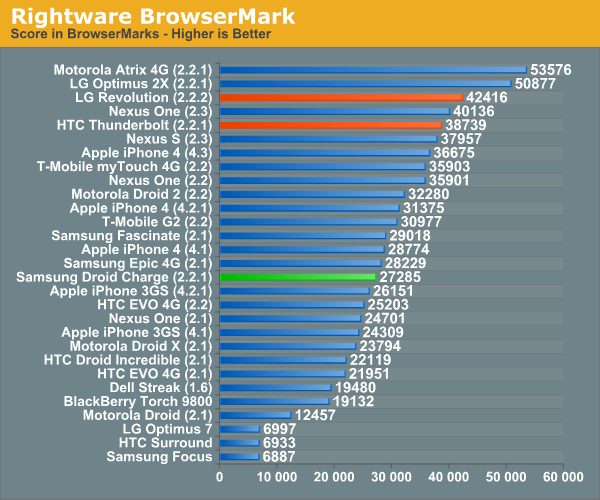
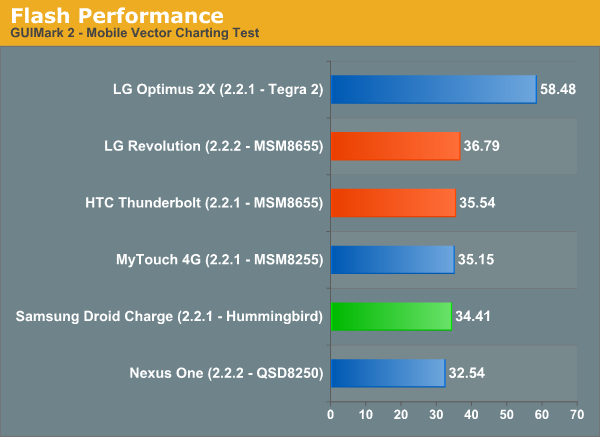
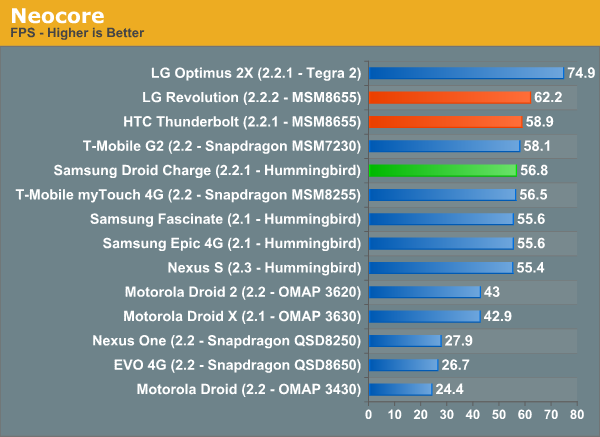
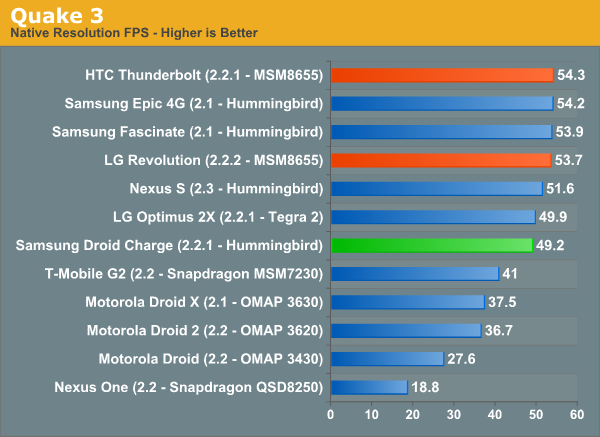
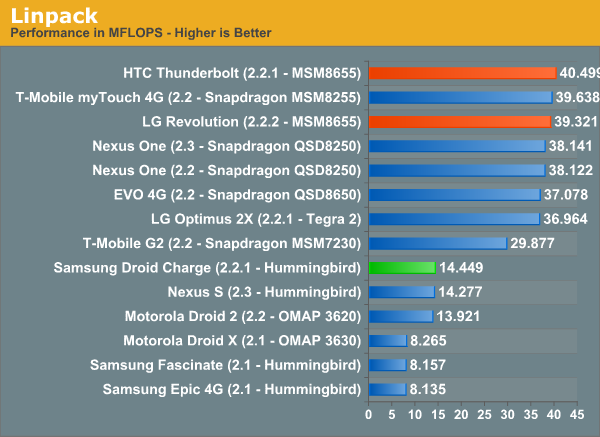
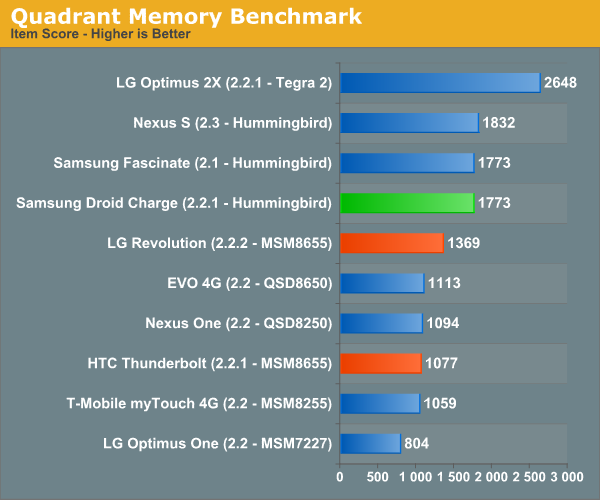
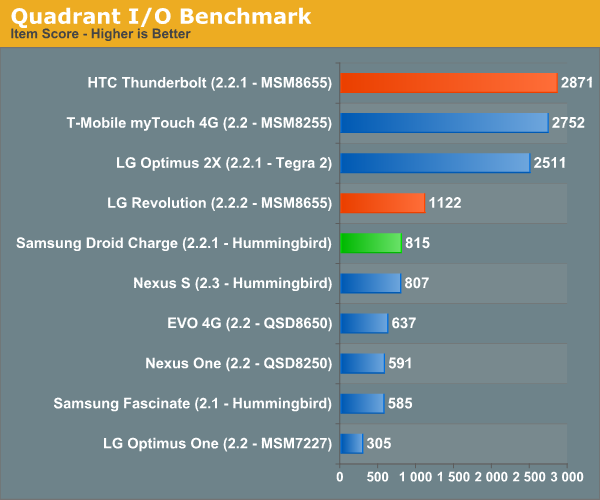
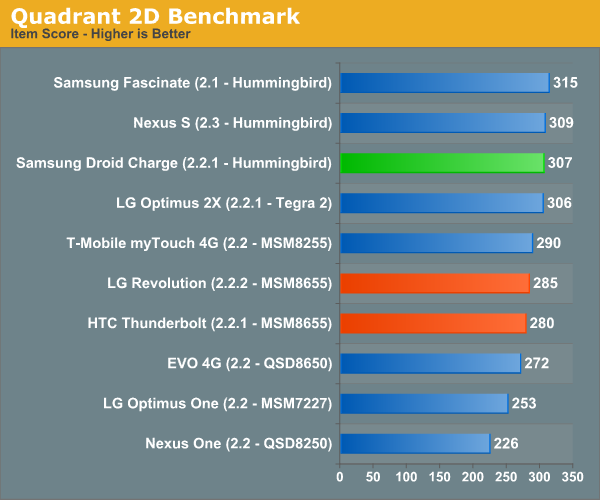

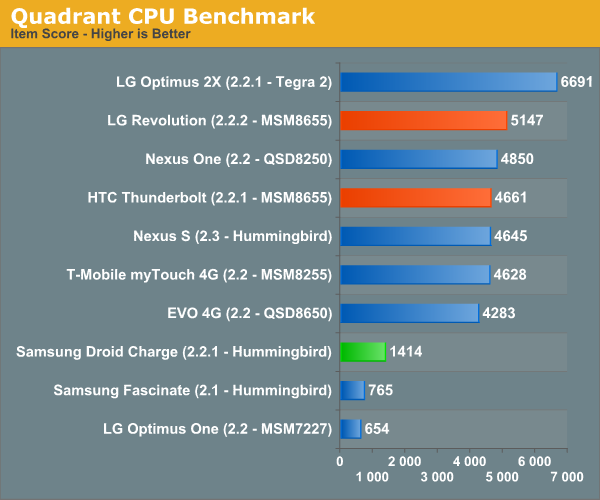


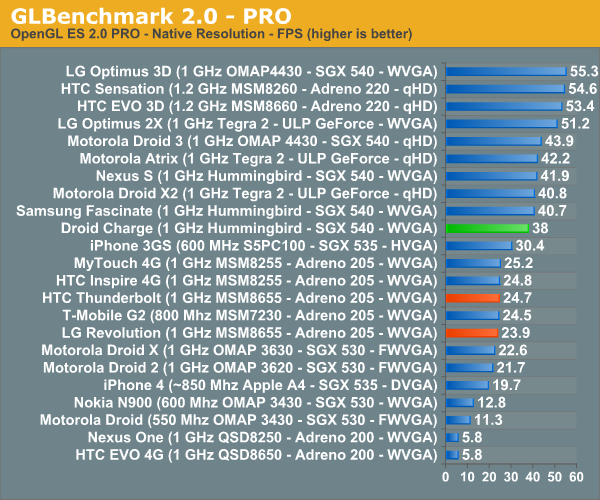










61 Comments
View All Comments
tuhinz - Wednesday, June 22, 2011 - link
The screenshots for the old and new builds are mixed up.Brian Klug - Wednesday, June 22, 2011 - link
I'm going to clean things up, but I ended up taking a bunch of screenshots before the update, and then after, and figured I'd just show everything.-Brian
Brian Klug - Wednesday, June 22, 2011 - link
Oops I see what you mean now - D'oh, fixed.-Brian
shaolin95 - Wednesday, June 22, 2011 - link
You should be adding a comment about vsync and benchmarks like Neocore. Most phones will be fps capped like the Galaxy S ones to 55fps or so.Regards
tayb - Wednesday, June 22, 2011 - link
Come on. This is just getting absolutely ridiculous. Android 2.3 has been out since DECEMBER. That's 7 months ago. Why are we still getting phones with an OS that was replaced more than half a year ago.dagamer34 - Wednesday, June 22, 2011 - link
To wrap this review up, if you want decent LTE battery life on your handset, wait for integrated GSM/CDMA/LTE chipsets.vision33r - Wednesday, June 22, 2011 - link
Impatient Android users would never wait since they change phones every 6 months.PeteH - Wednesday, June 22, 2011 - link
Do we know the timeframe on low-power integrated or LTE only chipsets? The limited battery life of these LTE devices in exchange for speed is a compromise I'm unwilling to make.EnerJi - Wednesday, June 22, 2011 - link
Supposedly Qualcomm has said that their next-generation integrated chipset will ship in volume towards the end of the year. Usually, phones that take advantage of said chipset will lag by several months.However, the timing is close enough to the supposed launch of the iPhone 5 (or iPhone 4S) that there's a whisper of a chance it could launch on the next iPhone... Apple has proven a willingness to pay a large up-front sum to accelerate a supplier component launch and / or lock up supply of a component that puts them ahead of the competition, and this would be a huge differentiator if they could pull it off.
Brian Klug - Wednesday, June 22, 2011 - link
Absolutely, MSM8960 with Krait and integrated LTE should be very interesting to compare with this current architecture. Hopefully battery life is much improved.-Brian